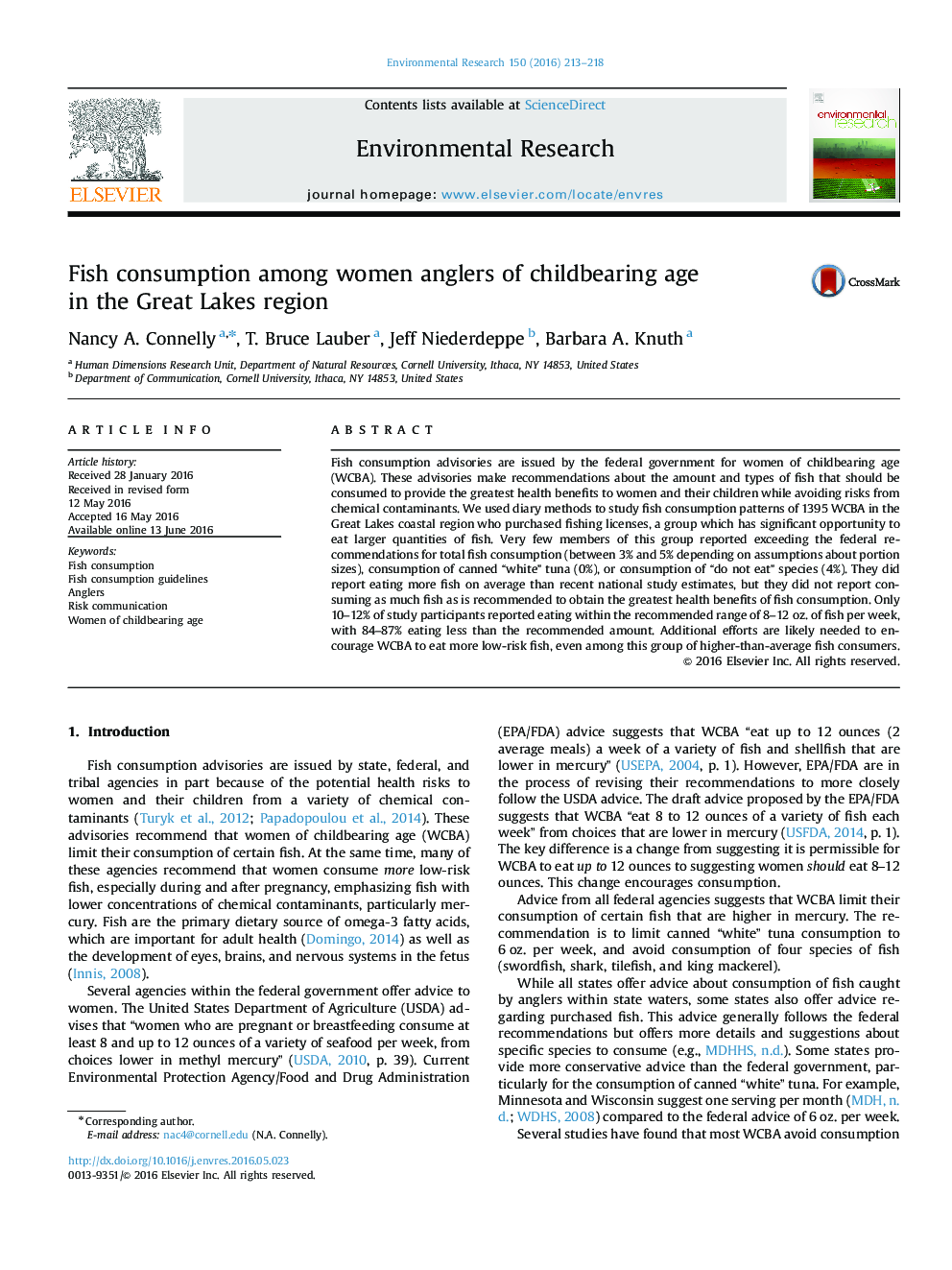| Article ID | Journal | Published Year | Pages | File Type |
|---|---|---|---|---|
| 6351060 | Environmental Research | 2016 | 6 Pages |
â¢Women anglers of childbearing age (WACBA) ate more fish than estimated nationally.â¢Few WACBA in the Great Lakes region exceeded federal fish consumption guidelines.â¢About 85% of WACBA ate less fish than recommended to obtain health benefits.
Fish consumption advisories are issued by the federal government for women of childbearing age (WCBA). These advisories make recommendations about the amount and types of fish that should be consumed to provide the greatest health benefits to women and their children while avoiding risks from chemical contaminants. We used diary methods to study fish consumption patterns of 1395 WCBA in the Great Lakes coastal region who purchased fishing licenses, a group which has significant opportunity to eat larger quantities of fish. Very few members of this group reported exceeding the federal recommendations for total fish consumption (between 3% and 5% depending on assumptions about portion sizes), consumption of canned “white” tuna (0%), or consumption of “do not eat” species (4%). They did report eating more fish on average than recent national study estimates, but they did not report consuming as much fish as is recommended to obtain the greatest health benefits of fish consumption. Only 10-12% of study participants reported eating within the recommended range of 8-12Â oz. of fish per week, with 84-87% eating less than the recommended amount. Additional efforts are likely needed to encourage WCBA to eat more low-risk fish, even among this group of higher-than-average fish consumers.
